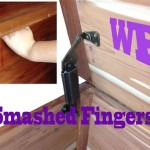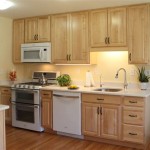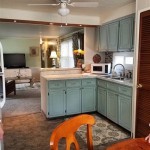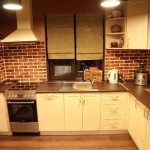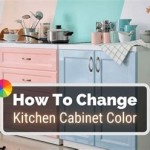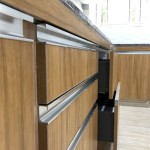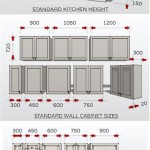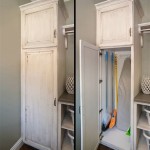Kitchen Cabinet Fixings To Wall Mount: A Comprehensive Guide
Installing kitchen cabinets requires careful consideration of the fixing method to ensure stability and longevity. Wall mounting cabinets is a common practice, offering various advantages such as maximizing space and creating a clean, uncluttered look. However, selecting the right fixings for your cabinets is crucial for their safe and secure installation. This article delves into the diverse options available for wall mounting kitchen cabinets, providing detailed insights into their characteristics, advantages, and limitations.
Understanding the Importance of Secure Fixings
The importance of using appropriate fixings for wall-mounted kitchen cabinets cannot be overstated. Inadequate fixings can lead to a range of problems, including:
- Cabinet Instability: Insufficiently secured cabinets can wobble, sag, or even detach from the wall, posing a safety hazard and damaging the surrounding area.
- Damage to Walls: Improper fixings can damage the drywall or plaster, causing cracks, holes, or even complete wall failure.
- Aesthetic Issues: Unevenly mounted cabinets can create an unsightly and unprofessional appearance, detracting from the overall kitchen design.
Therefore, choosing the right fixings for your cabinet installation should be a priority, taking into account factors like cabinet weight, wall material, and desired load capacity.
Common Kitchen Cabinet Fixing Options
The world of kitchen cabinet fixings offers a plethora of options, each tailored to specific needs and applications. Here are some of the most common types:
1. Screws
Screws are a staple in cabinet installation, often used in conjunction with other fixings for added security. They are available in various lengths, materials, and thread patterns, allowing for flexibility in application. The most common types for cabinets include:
- Wood Screws: Suitable for attaching cabinets to wooden studs or framing.
- Drywall Screws: Specifically designed for drywall, offering improved holding power.
- Self-Tapping Screws: Can penetrate various materials without predrilling, making them convenient for quick installations.
However, relying solely on screws can pose risks, particularly when dealing with plasterboard walls or heavy cabinets.
2. Cabinet Hanging Rails
These rails are specifically designed for cabinet installation, offering a robust and reliable solution. They typically consist of a metal rail that attaches to the wall, providing a secure base for the cabinet's hanging mechanism. Cabinet hanging rails are often used in conjunction with screws, ensuring a strong and stable connection.
Advantages include:
- Adjustable Height: Some rails offer adjustable mounting positions, allowing for precise cabinet alignment and height customization.
- Enhanced Stability: The continuous support provided by the rail significantly increases cabinet stability, especially in high-traffic areas.
3. Cabinet Clips
Cabinet clips are a versatile option, offering various fastening methods. They are typically made of metal or plastic and attach to the cabinet's back panel. The clip then securely fits over a wall-mounted bracket, providing a strong and adjustable connection.
Advantages include:
- Ease of Installation: Clips often require minimal tools and can be easily installed without extensive drilling.
- Adjustable Mounting Position: Some clips allow for slight adjustments after installation, ensuring proper alignment and leveling.
- Concealed Fixings: Clips can be hidden behind the cabinet, creating a clean and aesthetic finish.
4. Wall Anchors
Wall anchors are essential for securing cabinets to walls lacking solid framing. They are available in various materials, sizes, and load capacities, allowing for customization based on the wall material and cabinet weight. Common types include:
- Plastic Anchors: These are cost-effective and suitable for light to moderate weights. They expand within the drill hole, providing a secure grip for the screw.
- Metal Anchors: Designed for heavier loads, metal anchors offer enhanced strength and durability. They come in various styles, such as toggle bolts, molly bolts, and expansion anchors.
Wall anchors are crucial for ensuring secure cabinet installation in hollow walls, as they provide a firm grip for the screws, preventing the cabinet from pulling out.
Factors to Consider When Choosing Cabinet Fixings
Selecting the appropriate cabinet fixings requires careful consideration of several factors, including:
1. Cabinet Weight
The weight of the cabinet is a primary factor influencing fixing choice. Lighter cabinets can be secured using screws or clips, while heavier units need sturdier solutions like hanging rails or wall anchors.
2. Wall Material
The composition of the wall significantly impacts the fixing options. Solid walls, such as concrete or brick, can handle screws and anchors directly. Hollow walls (drywall or plasterboard) require specialized anchors to ensure secure attachment.
3. Desired Load Capacity
The intended use of the cabinet dictates the desired load capacity. For cabinets storing heavy items, robust fixings with high load capacity are essential.
In conclusion, understanding the diverse fixing options available for wall mounting kitchen cabinets is crucial for a secure and aesthetically pleasing installation. Choosing the right fixings requires careful consideration of cabinet weight, wall material, and desired load capacity. By selecting the appropriate fixings, homeowners can ensure the stability, longevity, and safety of their kitchen cabinets for years to come.

Wall Unit Fitting Adjustments Diy Kitchens Advice

Hafele Nylon Cabinet Bracket Plate Toolstation

Hanging Bracket Wall Hanger Plate 63mm Kitchen Cabinet Cupboard Mounting Overhead 150kg Load Capacity Fixing King

X2 Kitchen Wall Cabinet Hanger Mounting Plastic 29000740

Wall Unit Bracket Concealed Hanging Plate Kitchen Hanger Cupboard Cabinet

How To Install Kitchen Cabinets The Wall And Floor With Ease

X2 Koala Cabinet Hangers Spider Concealed Dowels Mounting 29036910

Goodhome White Wall Hanging Bracket Kit W 175mm Diy At B Q

Wall Unit Fitting Adjustments Diy Kitchens Advice

Kitchen Cabinet Wall Mounting Brackets Jet Press
Related Posts

